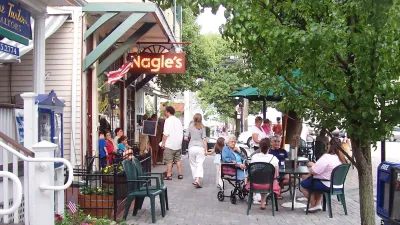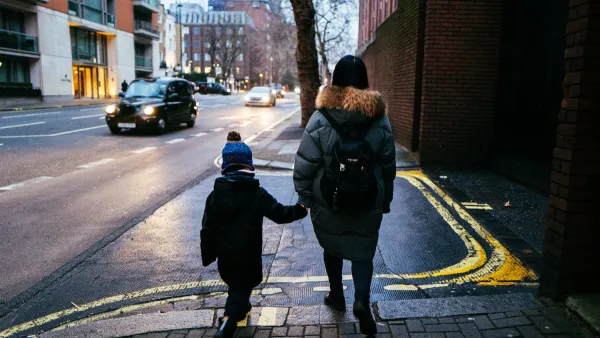Cars kill us and drive us crazy; while walking and biking improve our mental and physical health. So why do we design our cities for cars, asks Jeffrey Tumlin.

"Cities have policies that sound good on paper, calling for mixed-use development and walkable neighborhoods, but they also have detailed technical design requirements that don't let that happen," says Tumlin. "Instead, we end up with typical sprawl: it's actually illegal to build anything else."
"When we know that driving makes us fat, sick, dumb, mistrustful, and more likely to die early—but walking makes us fitter, stronger, better able to handle complex reasoning, more loving, and more trustful, why are we in the transportation world spending all of our effort designing around the needs of the car and not walking or biking? When we know the effects of driving on climate change, how could there be any argument?"
"Right now, engineers make many decisions based on something called 'level of service'—basically, how long cars are delayed at certain points. Our goals should be based on people, not cars," he argues. "Right now, a busy commercial street would be judged a transportation failure even though it’s a social and economic success. We need to change the way we measure, so designers can make the right decisions."
FULL STORY: How Better Urban Design Makes Us Healthier, Happier, and Sexier

National Parks Layoffs Will Cause Communities to Lose Billions
Thousands of essential park workers were laid off this week, just before the busy spring break season.

Retro-silient?: America’s First “Eco-burb,” The Woodlands Turns 50
A master-planned community north of Houston offers lessons on green infrastructure and resilient design, but falls short of its founder’s lofty affordability and walkability goals.

Delivering for America Plan Will Downgrade Mail Service in at Least 49.5 Percent of Zip Codes
Republican and Democrat lawmakers criticize the plan for its disproportionate negative impact on rural communities.

Test News Post 1
This is a summary

Test News Headline 46
Test for the image on the front page.

Balancing Bombs and Butterflies: How the National Guard Protects a Rare Species
The National Guard at Fort Indiantown Gap uses GIS technology and land management strategies to balance military training with conservation efforts, ensuring the survival of the rare eastern regal fritillary butterfly.
Urban Design for Planners 1: Software Tools
This six-course series explores essential urban design concepts using open source software and equips planners with the tools they need to participate fully in the urban design process.
Planning for Universal Design
Learn the tools for implementing Universal Design in planning regulations.
EMC Planning Group, Inc.
Planetizen
Planetizen
Mpact (formerly Rail~Volution)
Great Falls Development Authority, Inc.
HUDs Office of Policy Development and Research
NYU Wagner Graduate School of Public Service



























